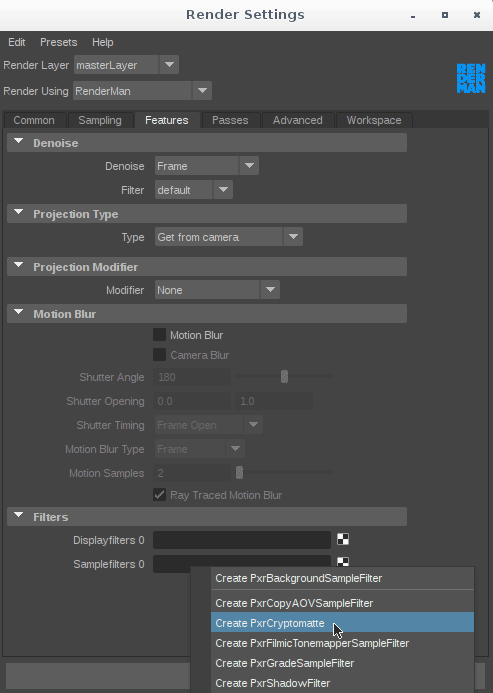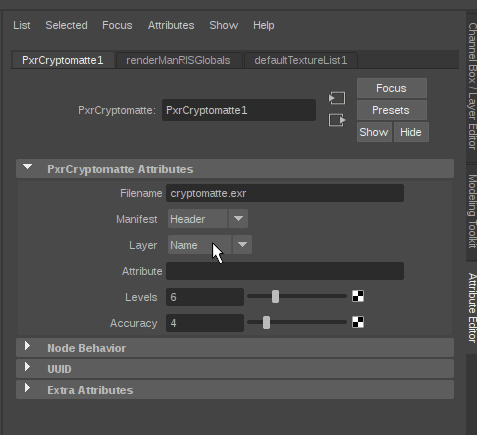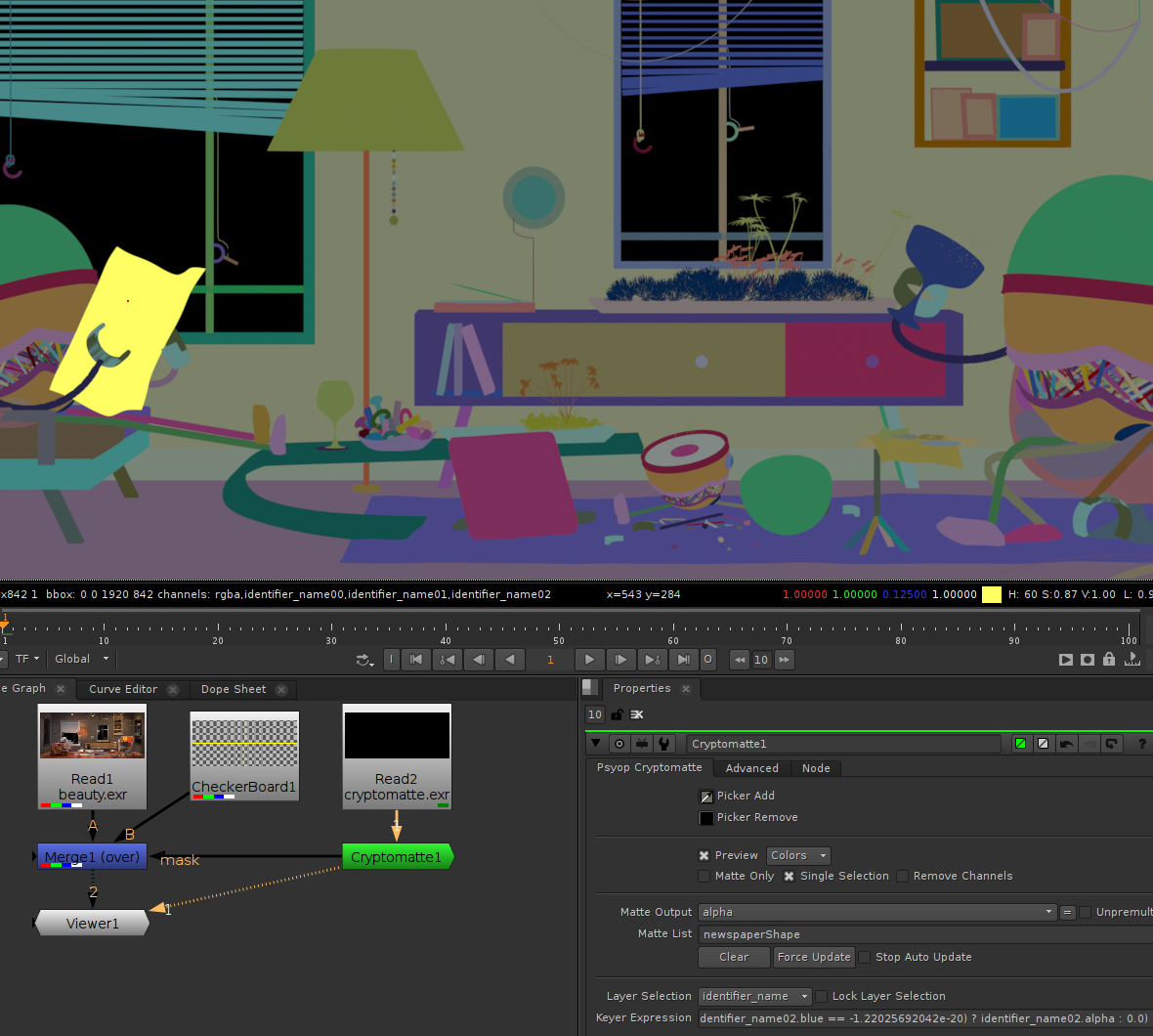Contents
Using PxrCryptomatte workflow, you can output IDs in Maya for easy selection in a compositing application. You can then use that selection as a mask to make changes selectively in post packages.
PxrCryptomatte is supplied as a Sample Filter plugin. As such the output for Cryptomatte is stored as a separate EXR file from your beauty or denoise outputs. Please note an OpenEXR is required to store the values correctly.
Under the Features Tab of the RenderSettings, create a PxrCryptomatte
The options above are default. You can find out more about the options by visiting the PxrCryptomatte page.
Note that after you create a Sample Filter, another empty connection will be created, allowing you to output Cryptomatte files using different criteria. For example, if you wanted one for per-object and another per-material, create another PxrCryptomatte for output and specify another name for the file.
For now, a separate OpenEXR is required to be output for each plugin, separate from your denoise or beauty EXRs. You can create a sequence by using the correct token, example: cryptomatte.${F4}.exr creates a rendered sequence with a padding of 4 spaces, cryptomatte.0001.exr
Below is an example in Nuke using our Robot Room Community Scene.
You can set a user string attribute in multiple ways if you want to assign an ID to geometry. Examples are as follows:
You could use a pre-assigned LPE group if you wanted those to match
Tell Cryptomatte you want to use: identifier:lpegroup
Or add the "Identifier Name" to the shape(s) from the RenderMan Attributes > Add > RenderMan
Tell Cryptomatte you want to use: identifier:name
Lastly, for groups (assigning to transform nodes) you can create your own user ID using "Transform Begin MEL" to the transform from the RenderMan Attribute menu. In the Cryptomatte Attribute field you would use the below example of "idlayers", this particular transform would write to the "fg" or foreground set of IDs.
RiAttribute "user" "string idlayers" "fg";



